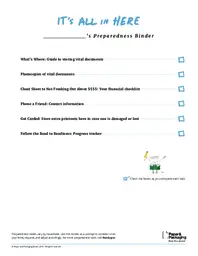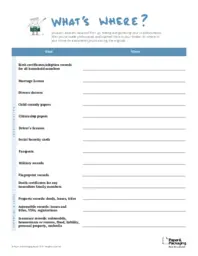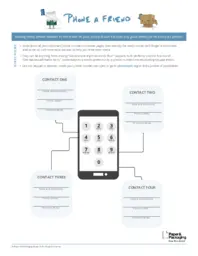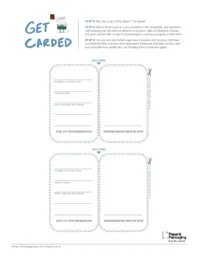
When events happen in the movies, it’s easy to think, “That will never happen to me.” But sometimes earthquakes strike on the East Coast, entire cities lose power and we realize that we no longer know our family members’ phone numbers by heart. Use paper as a tool to discuss uncomfortable and downright awkward topics to better prepare you and your family for life’s many curveballs.
By preparing ahead with paper and creating a binder full of your family’s most important documents, you can reduce fear and anxiety in emergency situations and ensure your kin have the information they need printed and ready to grab on the go.
Create a Binder Filled with Copies of Your Important Papers
One way to prepare for stressful situations is by ensuring all of your family’s most important papers are easy to access. According to Ready.gov, “Taking the time now to collect and secure these critical records will give you peace of mind and, in the event of an emergency, will ensure that you have the documentation needed to start the recovery process without delay.”
Print Duplicates of Important Documents
Begin creating your family’s preparedness binder by finding and copying your most important documents. These should include birth certificates, passports, insurance documents, wills, automobile titles and so forth. Place the duplicate papers filled with important family information in your binder and return your original copies to where they were. Use this guide to discover and record “What’s Where” for your vital documents.
Use Paper to Feel Secure About Your Finances
While tracking down documents to copy for your binder, use paper to feel secure about any financial accounts and documents of importance. Consult this cheat sheet to avoid any future financial freakouts, and download the worksheet below, where you can write down hints to help you remember your online passwords while keeping your affairs secure. (Never write down your actual password—just something to jog your memory.)
Memorize and Write Down Contacts
Call your family to the table to talk about the most crucial phone numbers that everyone needs to be able to find in the binder, or know by heart, and explain why. Print this downloadable to collect all your important contact numbers and discuss and determine which ones your family should memorize.
Then, learn your top picks with mnemonic devices. Download and print this worksheet, where you can see which letters of the alphabet represent which numbers, and then use the page to write down the mnemonic devices you come up with.
Need a little inspiration? Use a phone number spelling tool and discover words made by the digits in your phone number, create your own number-to-letter system or use a common song like “Frere Jacques” or “Old MacDonald Had a Farm” to help everyone memorize your family’s most important digits.
Print Out Contact Cards
Print contact cards to keep on your person and in your family’s emergency binder. Contact cards should include information like your top emergency contact, 911, important information like allergies, and an emergency meetup spot. Print the contact card templates below, making enough copies for each member of your family to keep in his or her wallet, purse or backpack, plus a couple of extra pages to add to your binder in case your information changes in the future. (Note: Never place identification of minors on the outside of their bags.) When you’ve filled in your most up-to-date information, cut the cards out, then laminate them and distribute one to each family member.
Tip: When determining an emergency meetup location, choose a central area that’s easy for everyone in your family to access, like a local library, but try to avoid popular landmarks where crowds could make it difficult to spot each other. Learn more about using paper to set meeting spots and prepare for emergency events on How Life Unfolds.
Protect Your Papers
Go into overprotective parent mode over your family binder of papers and do a little shopping to secure its contents.
Get a fire- and waterproof box or safe to store vital documents in your home. Depending on your needs, you might consider getting a safe deposit box as well. Additionally, make a duplicate family planning binder for your attorney or an out-of-town relative or friend to keep. (Consider also buying page protectors, especially if your kids are little and you anticipate spills while reviewing the binder’s materials with them.)
Give Awkward a Face
Having trouble getting everyone involved in preparedness planning? Make it a fun project by decorating your family planning binder with your family’s worst photos. Have each family member select the one he or she thinks is funniest and cover the binder.
Track Your Progress
As you’re compiling hard copies for your binder, print out the paper below and color in each step along the way to track your preparation progress. When each bubble is filled in on the page, you’ll know you’re prepared thanks to paper.
Now that everything you need is in one place, you’ll be ready to sidestep some of the everyday awkwardness around preparedness planning and flip on over to feeling more secure.
If you're looking for more ways to use paper to help you plan, take a look at these printable templates focused on helping you stay organized.








